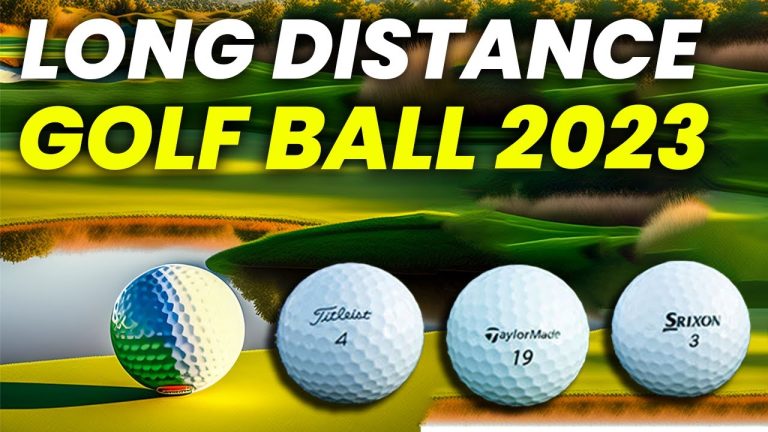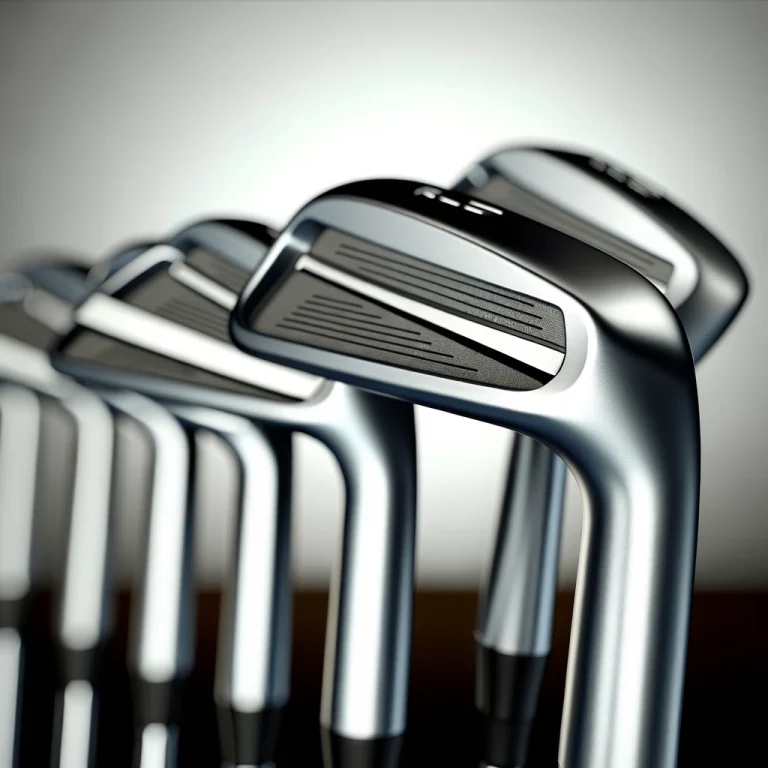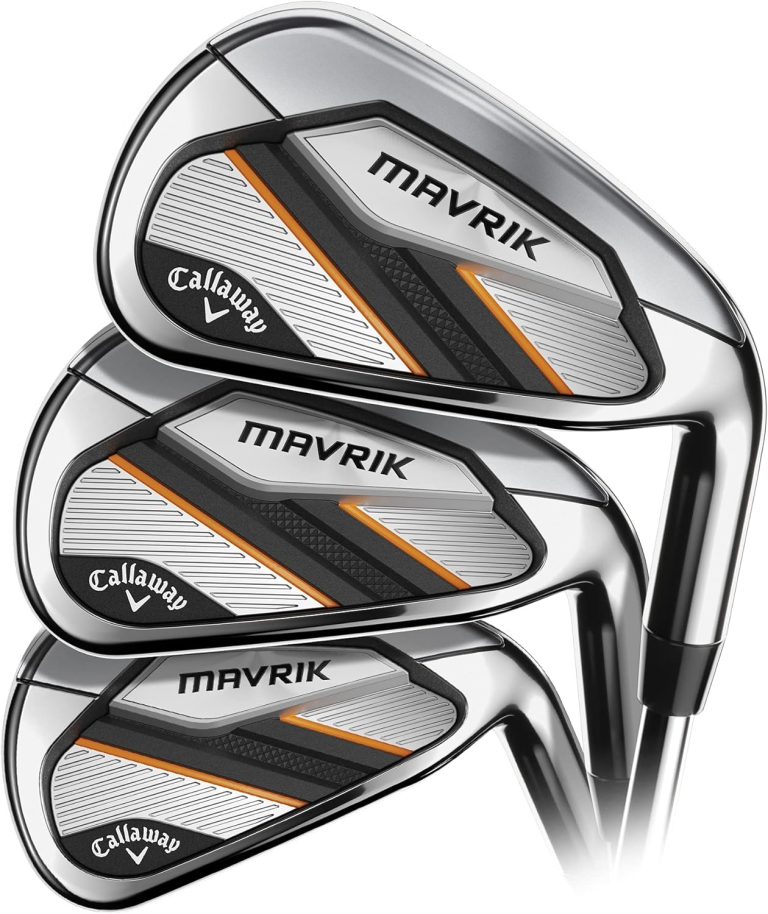Braving the Chill: The best cold weather golf ball for Winter Play
Playing golf in cold temperatures can be a challenge, but choosing the best golf ball can make a significant difference in your game. Cold weather golf balls are designed to perform better in colder temperatures, providing longer distances and better control. So, what makes a golf ball suitable for cold weather and what factors should you consider when choosing one?
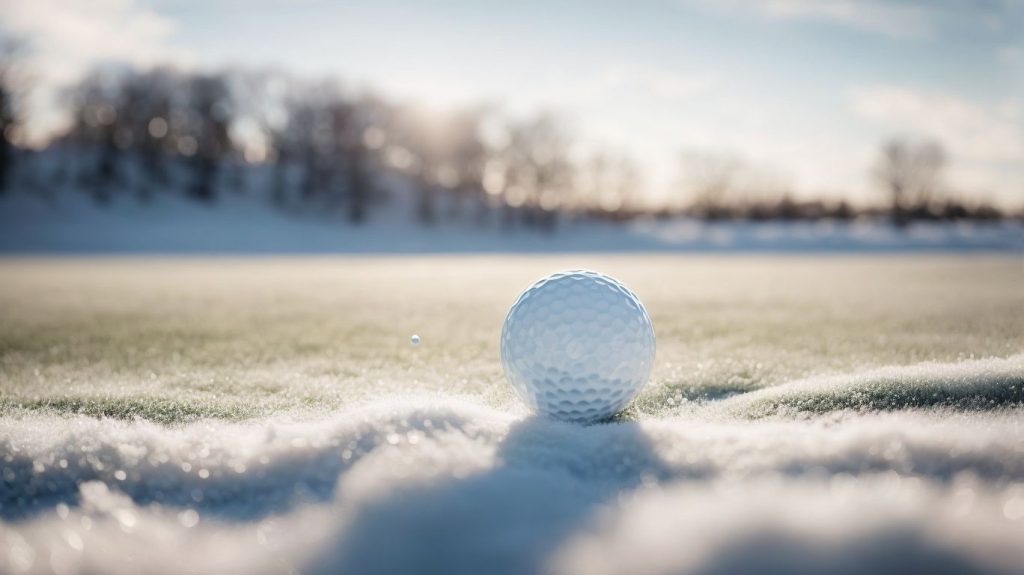
Firstly, cold weather golf balls have a lower compression, which means they can compress and deform more easily upon impact, resulting in longer distance. They also have a higher spin rate, allowing better control on the greens. The cover material is also crucial as it affects the ball’s grip and feel. Additionally, visibility is essential in colder weather, so choosing a bright or colored ball can make it easier to spot on the golf course.
Based on expert reviews and player feedback, here are the top five best cold weather golf balls:
- Titleist Pro V1x
- TaylorMade TP5x
- Callaway Chrome Soft X
- Bridgestone Tour B XS
- Srixon Z-Star XV
These balls are known for their performance and durability in cold weather conditions, making them a popular choice among golfers.
When playing with cold weather golf balls, there are a few tips to keep in mind. Firstly, keep the ball warm by storing it in your pocket or using hand warmers. Adjust your swing to accommodate the lower compression and higher spin rate of cold weather balls. Using a colored ball can also make it easier to spot in the winter landscape. Lastly, always bring extra balls in case you lose some due to the cold or wet conditions.
In conclusion, choosing the right cold weather golf ball can greatly improve your game in colder temperatures. Consider factors such as compression, spin rate, cover material, and visibility when making your selection. With the right ball and these tips in mind, you can enjoy a successful round of golf even in the coldest weather.
Key Takeaways:
- When choosing a cold weather golf ball, consider compression, spin rate, cover material, and visibility.
- The top 5 best cold weather golf balls are Titleist Pro V1x, TaylorMade TP5x, Callaway Chrome Soft X, Bridgestone Tour B XS, and Srixon Z-Star XV.
- Tips for playing with cold weather golf balls include keeping the ball warm, adjusting your swing, using a colored ball, and bringing extra balls.
What Makes a Golf Ball Suitable for Cold Weather?
Golf balls suitable for cold weather need to have a compression rating lower than 70 to ensure they remain flexible in low temperatures. They should also have a cover specifically designed for cold conditions, such as the Titleist DT TruSoft. In addition, having a high-visibility color like orange or yellow can be beneficial for easily locating the ball in snow. Some recommended brands for optimal performance in cold weather include Bridgestone E12 Soft and Srixon Soft Feel.

Understanding Cold Weather Impact on Golf Balls
Before diving into specific products, it’s important to understand how cold weather affects golf balls. In lower temperatures, golf balls tend to lose their compression and become harder. This results in reduced spin and lower travel distances. To combat this, choosing a golf ball with a lower compression rating, which will remain softer and more responsive in cold conditions, is advisable.
Factors to Consider When Choosing Winter Golf Balls
When the temperature drops, golfers need to make adjustments to their equipment in order to maintain their game. One crucial aspect is selecting the right golf ball for cold weather conditions. In this section, we will discuss the key factors to consider when choosing a cold weather golf ball. From compression and spin rate to cover material and visibility, each element plays a vital role in the performance of the ball in colder temperatures. So, let’s take a closer look at what makes a golf ball ideal for those chilly rounds on the course.
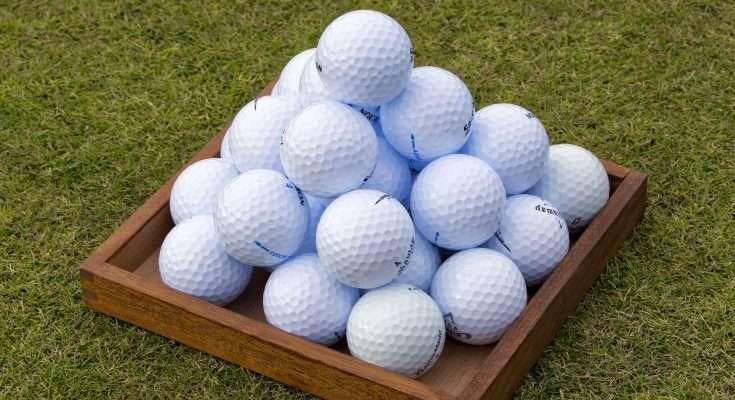
1. Compression
- Compression refers to the density and hardness of a golf ball, which can greatly affect its performance in colder weather.
- For better distance and feel in cold conditions, it is recommended to use a low compression golf ball.
- When shopping for golf balls, look for ones with a compression rating below 70 for optimal performance in colder temperatures.
- On the other hand, higher compression balls are more suitable for warm air as they provide better control and workability.
2. Spin Rate
Spin rate, a vital consideration when selecting a golf ball for cold weather, plays a significant role in the ball’s ability to grip the clubface and maintain control. Golf balls with high spin rates, such as Titleist Pro V1x and TaylorMade TP5x, offer increased spin for accurate shots in cold conditions, resulting in improved control and stopping power on the greens.
Choosing the right cover material for your cold weather golf ball is like picking out a winter coat – it’s all about staying warm and looking good on the course.
3. Cover Material
- Dimple Design: Opt for golf balls with a seamless cover and aerodynamic dimple pattern to enhance performance in cold weather.
- Cover Material: Choose golf balls with a urethane cover for improved durability, spin, and control in colder temperatures.
- Layer Construction: Select golf balls with a multi-layer construction, including a soft cover, to maintain responsiveness in cold conditions.
Because let’s face it, you can’t hit what you can’t see. Choose a golf ball that stands out like a sore thumb in the cold weather.
4. Visibility
- Choose brightly colored golf balls to enhance visibility on the course, especially in low light conditions.
- Opt for yellow, orange, or green balls as they are easier to spot against a snowy backdrop.
- Consider matte finish balls to reduce glare from the sun or artificial lighting and improve visibility.
- Ensure that the ball’s number and alignment aid are clearly visible for easy tracking.
Top 8 Best Winter Golf Balls
When the temperature drops, it can be challenging to find a golf ball that performs well in colder conditions. Luckily, there are specific cold weather golf balls designed to maintain distance and feel in lower temperatures. In this section, we will discuss the top 5 best cold weather golf balls on the market. From the popular ist Pro V1x to the lesser-known Srixon Z-Star XV, we’ll cover the unique features and benefits of each ball to help you find the perfect one for your next winter round.
1. Titleist Pro V1x
- Construction: The Titleist Pro V1x boasts a 17% thinner cover, a larger casing layer, and a faster casing layer material, all working together to promote higher ball speed and lower long game spin.
- Flight: Its high-coverage dimple design ensures a penetrating trajectory even in windy and cold conditions, allowing for better distance control.
- Control: The Pro V1x offers excellent control on the green and a soft feel, making it especially valuable in cold weather when greens are firmer.
Pro-tip: Keep your Titleist Pro V1x golf balls warm by storing them in a pocket close to your body for optimal performance in cold weather.
The TaylorMade TP5x – perfect for those cold days on the course, because even your golf ball needs some extra layers.
2. TaylorMade TP5x
The TaylorMade TP5x is a top-rated golf ball designed for high compression, providing exceptional spin rates and a urethane cover for improved visibility. It is the ideal choice for playing in colder weather, delivering both distance and control on the course.
This ball is perfect for cold weather, just like a cozy fireplace on a snowy day.
3. Callaway Chrome Soft X
The Callaway Chrome Soft X is specially designed for optimal performance in colder temperatures, boasting a soft feel, low compression, and exceptional spin control. Its durable and responsive urethane cover material ensures longevity, while its bright color enhances visibility in snowy conditions.
This ball is a must-have for cold weather play, just like a warm coat and some hot cocoa.
4. Bridgestone e12 Soft
Overview: Designed to provide a soft feel without losing distance, the Bridgestone e12 Soft is a high-performance ball that excels in colder conditions.
Key Features:
- Active Acceleration Mantle layer for increased thrust and higher initial velocity.
- Delta Wing Dimple pattern for smoother airflow and less drag.
- Three-piece construction with a soft feel.
Best For: Golfers seeking a soft feel with enhanced aerodynamics. Suitable for moderate swing speeds.
5. Srixon Soft Feel
Overview: The Srixon Soft Feel is designed to provide a high level of performance in colder temperatures. Its energetic gradient growth core ensures a soft feel without sacrificing distance.
Key Features:
- Low compression design.
- Soft cover for improved feel on all shots.
- Aerodynamic dimple pattern for a penetrating flight.
Best For: Golfers who want an affordable yet high-performing cold-weather ball. It’s a great choice for mid to high handicappers.
6. Titleist DT TruSoft
Overview: The Titleist DT TruSoft is known for its exceptionally low compression, making it an ideal choice for cold weather conditions. It offers a good combination of distance and feel.
Key Features:
- Low compression for a soft feel.
- Good distance off the tee.
- Short game playability with a consistent ball flight.
Best For: Golfers who prioritize a soft feel and control in colder conditions. It’s suitable for players with a wide range of swing speeds.
7. Callaway Supersoft
Overview: Callaway’s Supersoft lives up to its name, being one of the lowest compression balls on the market. It performs well in cold weather, maintaining a good degree of softness and flexibility.
Key Features:
- Ultra-low compression core for increased accuracy.
- Enhanced feel and increased ball speed.
- HEX Aerodynamics for reduced drag and improved lift.
Best For: Players looking for a blend of feel and distance in winter conditions. It’s particularly beneficial for golfers with slower swing speeds.
8. Wilson Staff DUO Soft+
Overview: The Wilson Staff DUO Soft+ is one of the softest golf balls available, offering excellent performance in cold weather due to its low compression rate.
Key Features:
- The lowest compression in a 2-piece ball.
- VelocitiCOR for advanced materials in the core, enhancing performance.
- Consistent and accurate flight path.
Best For: Players who want maximum softness and feel, especially in lower temperatures. Ideal for those with slower swing speeds.
Tips for Playing with Cold Weather Golf Balls
Playing golf in cold weather can be a challenge, but with the right tips, you can still enjoy the game. One key factor to consider is the type of golf ball you use in colder temperatures. In this section, we’ll discuss some helpful tips for playing with cold weather golf balls. From keeping the ball warm to adjusting your swing, we’ll cover all the essentials to help you perform your best on the course. So grab your clubs and let’s get started!
1. Keep the Ball Warm
To maintain warmth in golf balls during cold weather, follow these steps:
- Store the golf balls indoors to keep them at room temperature.
- Utilize hand warmers or a thermos filled with warm water to maintain the temperature of the balls.
- Keep the balls in your pocket to benefit from your body heat.
- Consider using a heated golf ball cover to prevent the ball from losing warmth.
Did you know? Golf balls exposed to cold air can experience decreased distance and accuracy due to their lower compression.
Don’t worry, your swing doesn’t need to be as smooth as a hot cup of cocoa in cold weather. Just make some minor adjustments and you’ll be hitting those cold weather golf balls like a pro.
2. Adjust Your Swing
- Check grip pressure to maintain control
- Focus on a smooth and steady swing tempo
- Utilize shorter backswings for better ball contact
- Adjust ball position in your stance based on the swing path
During a chilly tournament, a golfer made the necessary adjustments to their swing by shortening their backswing, leading to improved accuracy and distance despite the cold weather.
3. Use a Colored Ball
- Choose a bright-colored ball, such as yellow or orange, to improve visibility against the white snow.
- Colored balls are easier to track, assisting you in quickly locating them in the snow.
- Opt for matte finish balls to reduce glare and provide better visibility in overcast or snowy conditions.
- Make sure the colored ball follows golf regulations to avoid any penalties during play.
4. Bring Extra Balls
- Make sure to bring extra golf balls to replace any lost or damaged ones during cold weather play.
Pro-tip: Keep the additional balls in a pocket close to your body to maintain their warmth and prevent them from becoming too rigid in cold conditions.
Frequently Asked Questions
Which golf balls are recommended for cold weather golfing?
The Titleist TruFeel, Taylormade Tour Response, Bridgestone e6 Speed, Nitro Pulsar, and Volvik Vimax Soft are top options for cold weather golfing.
What makes the Titleist TruFeel a top performer in cold weather golfing?
The Titleist TruFeel is a consistent performer with a fast material construction, high flight, and durability.
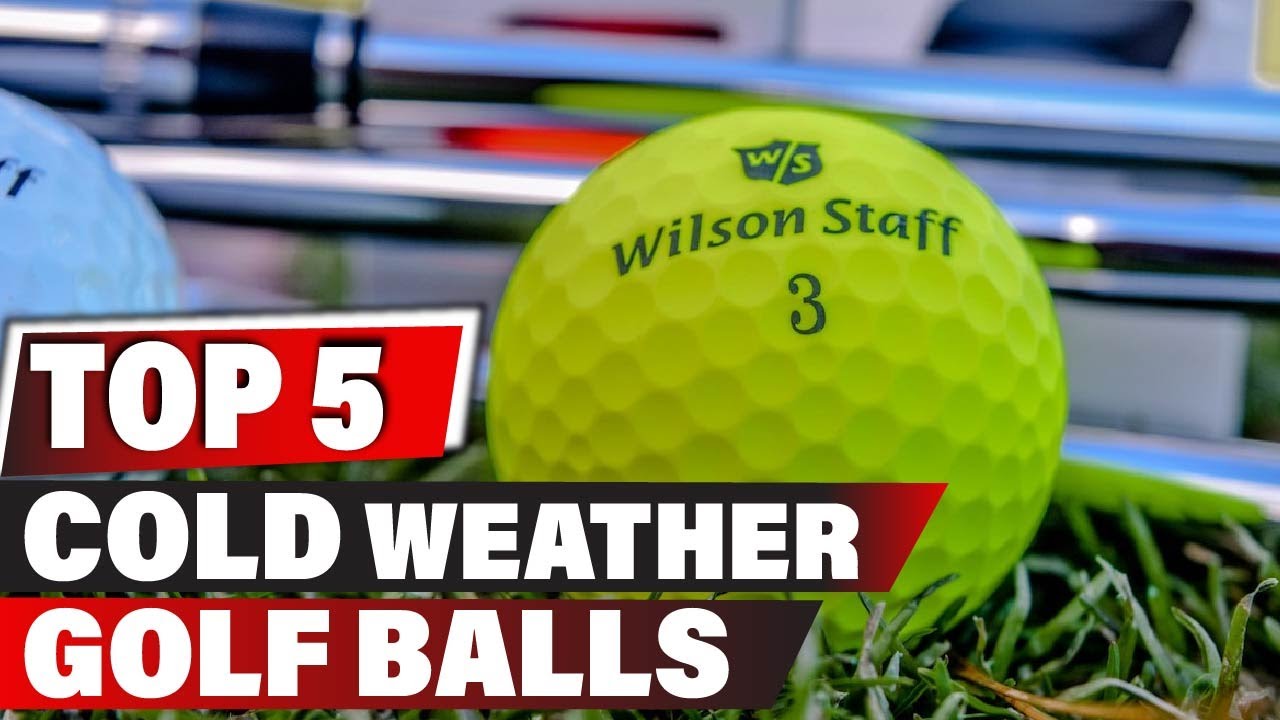


![Mastering Your Short Game: A Closer Look at the Cleveland CBX2 Wedge Review [2024]](https://www.fairwayfindings.com/wp-content/uploads/2023/07/Cleveland-CBX2-Wedge-Review-768x569.jpg)
![Teeing Off Early: The Best Golf Clubs for Toddlers [2024]](https://www.fairwayfindings.com/wp-content/uploads/2023/07/best-golf-clubs-for-toddlers-3-768x483.webp)
